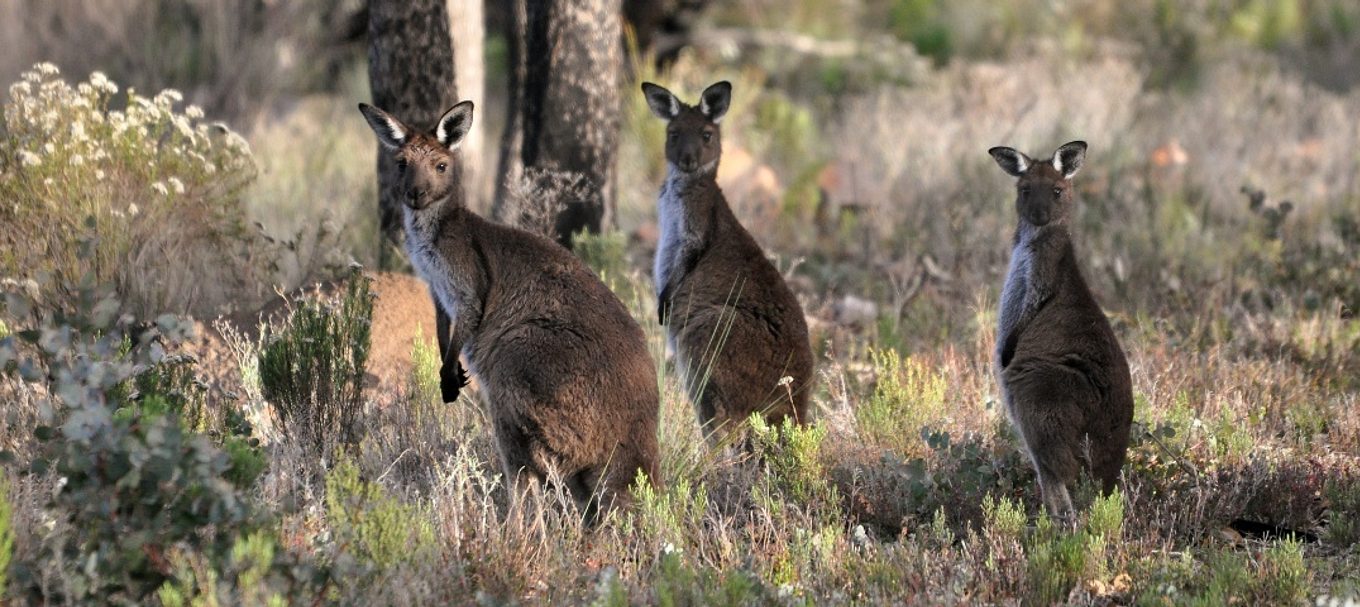
Learn how you can help South Australian wildlife affected by bushfires
The recent bushfires in South Australia have ravaged the state, significantly affecting wildlife and their habitats.
At this time, the best way for most people to contribute to the recovery of native wildlife is to donate to the Wildlife Recovery Fund. Donations to the fund will be used to re-establish habitat, particularly for threatened and vulnerable species.
But what if you need to provide immediate help to an injured or stranded animal?
It’s critical that they are taken care of properly, and don’t suffer because of the inexperience or lack of resources of the person caring for them.
If you do have the required experience and resources, here’s how to directly support wildlife post-fires, including helping injured wildlife and providing water or food:
Injured wildlife
If you come across a sick, injured or orphaned native animal, it’s vital that it receives specialised care and treatment.
If you don’t have the necessary skills or experience, it’s best to take it to a local wildlife rescue group.
If you do have the necessary skills and experience and intend on keeping the injured animal to provide short-term care for it, you will require a Rescue Permit.
Providing water
Accessing clean, fresh water can be an issue for wildlife following bushfires. You can help by providing a safe supply of clean water, but be sure to follow these tips:
- To prevent the spread of disease, clean, thoroughly dry, and refill containers with fresh water daily. Alternatively, you can use a refilling water station.
- To make sure all animals can access it, provide the water at both ground level (suitable for most mammals, birds and reptiles) and elevated in trees for animals that are reluctant to visit the ground (such as possums and some birds).
- Water containers should be shallow, robust and stable. To help smaller animals safely access the water, add a rock or stick (or other suitable material) to the container.
- Place water at least 50 metres away from public roads.
- Rather than one large water container, provide several small containers with a lower volume of water. Space water containers about 500m apart.
- If possible, to encourage timid species and reduce the risk of predators, place water containers in shaded areas or small clearings.
- Do not add electrolytes, rehydration solutions or sugar to water.
- As conditions improve you should begin to phase out the supply of water stations.
Providing food
Under normal circumstances, it is not recommend that you feed wildlife as this can do them, and the environment, more harm than good. Feeding wildlife has the potential to alter their natural behaviour, cause poor nutrition, spread disease and contribute to the presence of weeds and pests at feeding sites.
However, following the recent bushfires, particularly on Kangaroo Island, some wildlife may benefit from short-term supplementary feeding – but only until the natural environment recovers.
Supplementary feeding must only take place on your own land, or with the permission of the landholder.
If you choose to provide food for wildlife, you should:
- Offer fresh water with supplementary food.
- Remove uneaten food and clean all food containers daily to prevent the spread of disease and attraction of unwanted pests.
- Avoid providing mixtures of peanut butter, honey and rolled oats as they are harmful to some animals.
- Place food at least 50m away from public roads in shaded areas where wildlife will be safer from predators.
- Consider the risks of overfeeding, malnutrition, predation, misadventure, an increase in feral animal numbers and risks to human and animal health and safety whenever food is offered.
- Phase out supplementary feeding as conditions improve.
- Keep biosecurity in mind if you want to help wildlife on Kangaroo Island.
You should not:
- Provide raw meat, cooked bones, bread, baked goods, avocado, rice, banana, onion, garlic, chocolate, sugar, honey, molasses, brassicas, dairy products or processed foods with artificial sweeteners.
- Provide hay or throw birdseed directly onto the ground, especially in bushland areas, due to the risk of spreading weeds.
- Feed specialist animals, such as koalas, or endangered species, such as the Kangaroo Island dunnart and glossy black-cockatoos.
Choosing the right food is very important as different species have different requirements, and the preferred food of one species may be hazardous to others. This table shows the suitable foods for specific species.
These tips have been prepared by the Department for Environment and Water. Further details can be found on theDEW website.
Looking for more ways to contribute to bushfire recovery? You can also help by volunteering with your local ‘Friends of Parks’ group, or withConservation Volunteers Australia.





